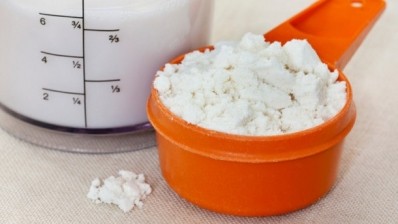European protein quality debate could re-open if DIAAS method adopted - Volac

Earlier this month, the FAO published a report in which it recommended replacing the current Protein Digestibility Correct Amino Acid Score (PDCAAS) with a new method called the Digestible Indispensable Amino Acid Score (DIAAS).
Using the DIAAS system, researchers discovered that dairy proteins could deliver up to 30% more amino acid than plant sources such as soy isolates. The dairy industry has welcomed the FAO findings, claiming that they demonstrate the “superiority of dairy proteins.”
Volac also welcomed the FAO recommendation, and has urged Codex to adopt the method in its food labelling and claims guidelines.
Nutrition manager for lifestyle nutrition at Volac, Suzane Leser, told DairyReporter.com that the FAO findings lay “groundwork” for recognition of protein quality under European health claims regulations.
Challenge current regulatory environment
“We need a robust, accurate approach to address protein quality, so we can challenge the current regulatory environment in which we operate,” said Leser. “Europe’s unprecedented attempt to regulate health claims has established that all proteins are nutritionally equal.”
“In contrast, the new FAO report ascertains that food proteins differ in their relative nutritional value, and puts the importance of protein quality at the core of healthy, sustainable diets. It also highlights the importance of giving people accurate information about the quality of the protein on their foods,” she said.
“This can’t be contested.”
According to Leser, current EU regulations currently prevent the food and beverage industry from “communicating effectively with consumers about protein.”
“We know that mixed European diets generally meet basic protein and amino acid needs because intake of high quality proteins dominates over low quality proteins. On that basis, the EFSA and the Commission do not, at this time, recognise the importance of protein quality for the general healthy population.”
“However, if the DIAAS method is adopted by both FAO and Codex we could see the debate re-open in Europe,” said Leser.
Commercial opportunities
Adoption of the DIAAS measurement method could provide opportunities from a commercial perspective as well as a nutritional point of view, Leser added.
“Protein efficiency directly impacts on the commercial value of a protein product,” she said. “The current PDCAAS method has been widely used to market the nutritional value of both plant and animal protein ingredients.”
“However, in changing the method to DIAAS, the large differences in protein quality will become apparent, mainly at the competitive top end of the scoring system.”








